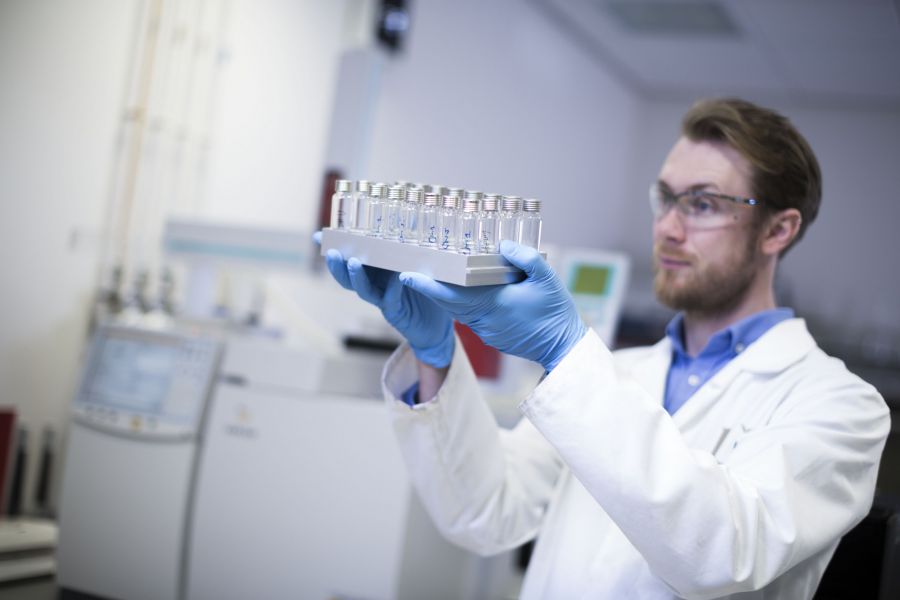Page content
Introduction to REF
The Research Excellence Framework (REF) assesses the quality of research in UK Higher Education Institutions. Results of this exercise are used to inform funding for future research.
Impact was introduced in the REF2014 assessment and is defined as the effect on, change or benefit to the economy, society, culture, public policy or services, health, the environment or quality of life, beyond academia.
Impact was considered a beneficial addition to REF and weighting increased to 25% in the REF2021 assessment.
Ulster University’s most recent REF submission was made in March 2021.
REF 2029
REF 2021 Impact Element versus Proposed REF 2029 Iteration
The briefing below contains important updates regarding the proposed impact element of the 2029 Research Excellence Framework (REF). These updates have been outlined in the 'Initial Decisions' document produced by the 4 UK higher education funding bodies.
The document was a result of extensive analysis and consultation conducted by the Future Research Assessment Programme.
Key Guidance Documents
- REF 2029 This section sets out the latest available information/updated for REF 2029
- REF 2029 Initial Decisions Report
If you are considering developing an impact case study (ICS) from your research for the next REF, please discuss with your Research Director and the Impact Team at the earliest opportunity so that you can receive appropriate support to develop your impact. Please remember that all ICSs must be underpinned by quality research produced at Ulster, that the impacts must have a benefit beyond academia, and that the impacts claimed must be backed up by verifiable available evidence.
The following information has been developed based on the guidance applied to REF2021 and will be useful for future submissions. This information will be updated once the new guidance for REF2029 is published.

Definition of impact for the REF
For the purposes of REF, impact is defined as an effect on, change or benefit to the economy, society, culture, public policy or services, health, the environment or quality of life, beyond academia.
Impact includes, but is not limited to, an effect on, change or benefit to:
- the activity, attitude, awareness, behaviour, capacity, opportunity, performance, policy, practice, process or understanding
- of an audience, beneficiary, community, constituency, organisation or individuals
- in any geographic location whether locally, regionally, nationally or internationally
Impact includes the reduction or prevention of harm, risk, cost or other negative effects.
Impacts on research or the advancement of academic knowledge within the HE sector (whether in the UK or internally) are excluded – the submitted unit’s contribution to academic research and knowledge is assessed within the ‘outputs’ and ‘environment’ elements of REF.
Impacts on students, teaching or other activities both within and beyond the submitting HEI are included.

Definition of research for the REF
For the purposes of REF, research is defined as a process of investigation leading to new insights effectively shared.
It includes:
- work of direct relevance to the needs of commerce, industry, culture, society, and to the public and voluntary sectors;
- scholarship;
- the invention and generation of ideas, images, performances, artefacts including design, where these lead to new or substantially improved insights;
- the use of existing knowledge in experimental development to produce new or substantially improved materials, devices, products and processes, including design and construction.
- Research that is published, disseminated or made publicly available in the form of assessable research outputs, and confidential reports.
It excludes:
- Routine testing and routine analysis of materials, components and processes such as for the maintenance of national standards, as distinct from the development of new analytical techniques;
- The development of teaching materials that do not embody original research.

The definitions in the starred levels in the impact sub-profile are:
| Star level | Definition |
|---|---|
Four star | Outstanding impacts in terms of their reach and significance |
Three star | Very considerable impacts in terms of their reach and significance |
Two star | Considerable impacts in terms of their reach and significance |
One star | Recognised but modest impacts in terms of their reach and significance |
Unclassified | The impact is of little or no reach and significance; or the impact was not eligible; or the impact was not underpinned by excellent research produced by the submitted unit |

REF Weighting: Outputs, Impact and Environment
In forming their overall quality judgements, the sub-panels will assess three distinct elements of each submission – outputs, impact and environment – against the following generic criteria:
Outputs: The sub-panels will assess the quality of submitted research outputs in terms of their ‘originality, significance and rigour, with reference to international research quality standards. This element will carry a weighting of 60% in the overall outcome awarded to each submission.
Impact: The sub-panels will assess the ‘reach and significance’ of impacts on the economy, society, culture, public policy or services, health, the environment or quality of life that were underpinned by excellent research conducted in the submitted unit. This element will carry a weighting of 25%.
Environment: The sub-panels will assess the research environment in terms of its ‘vitality and sustainability’, including the approach to enabling impact from its research, and its contribution to the vitality and sustainability of the wider discipline or research base. This element will carry a weighting of 15%.

Impact Criteria – Reach and Significance
Reach – the extent and/or diversity of the beneficiaries of the impact, as relevant to the nature of the impact.
Significance – the degree to which impact has enabled, enriched, influenced, informed or changed the performance, policies, practices, products, services, understanding, awareness or well-being of the beneficiaries.
- The sub-panels will make an overall judgement about the reach and significance of impacts, rather than assessing them separately.
- While ICS need to demonstrate both, the balance between them may vary.
- Sub-panels will exercise their judgement without privileging or disadvantaging either reach or significance.
- Reach will be assessed in terms of the extent to which beneficiaries have been affected – not in geographic terms or absolute numbers.
- Criteria will be applied wherever the impact has been felt, regardless of geography or location.
- No account will be taken of anticipated or future potential impact – nor impact that occurred outside the assessment period.

FTE of Category A submitted staff | Number of case studies |
|---|---|
Up to 19.99 | 2 |
20 to 34.99 | 3 |
35 to 49.99 | 4 |
50 to 64.99 | 5 |
65 to 79.99 | 6 |
80 to 94.99 | 7 |
95 to 109.99 | 8 |
110 to 159.99 | 9 |
160 or more | 10, plus one further case study per additional 50 FTE |

Impact case studies continued from REF 2014
Case studies will be considered to be continued if:
- The body of underpinning research is the same as described in a 2014 case study. This should not be understood solely in relation to the referenced outputs, but means that the continued case study does not describe any new research having taken place since the previous case study that has made a distinct and material contribution to the impact and
- There is significant overlap in the impact described, so that the impact types and beneficiaries are broadly the same as described in the 2014 case study.
REF Impact and Evidence
This information will be updated once the new guidance for REF2029 is published.
The following examples of impacts and evidence based on REF 2021 guidance illustrate the various areas in which impact from research may arise. This includes evidence examples from Ulster’s REF 2014 submission as well as sample testimonials. These examples are indicative only, and should not be interpreted as exhaustive.
REF 2021 expressly underlined that impact case studies may ‘refer to a wide range of types of evidence, including qualitative, quantitative and tangible or material’, that ‘a diversity of evidence is welcome’, and that ‘no type of evidence is inherently preferred over another’. It was further underlined that, ‘so far as possible’, evidence provided should be ‘independently verifiable’, entailing corroborating sources external to the HEI.
Testimonial evidence was defined as factual statements (from external sources) that corroborate the specific impact claims made within a given case study; however, it was also acknowledged that ‘there may be occasions where opinion- based testimonials are appropriate’, such as where the impact is on public understanding.
Evidence provided in support of a given case study should convincingly corroborate the link between the underpinning research and the impact claimed. REF impact assessment is based on the ‘reach’ and ‘significance’ of the impact claimed.
Further examples of impact and evidence may be found in the REF 2014 searchable database and REF 2021 searchable database of Impact Case Studies.
REF Glossary
Reach: the extent and/or diversity of the beneficiaries of the impact. The extent to which the potential constituencies, number or groups of beneficiaries have been reached
Significance: The degree to which the impact has enabled, enriched, influenced, informed or changed the performance, policies, practices, products, services, understanding, awareness or wellbeing of the beneficiaries.
Underpinning: The research has made ‘a distinct and material contribution’ to the impact arising, such that the impact ‘would not have occurred or would have been significantly reduced’ without that contribution.
Examples of Impact and Evidence
(NB: this list is not exhaustive)

Areas of Impact
Impacts where the beneficiaries are individuals/groups/animals whose health outcomes have been improved, quality of life has been enhanced (or potential harm mitigated) or rights/interests been protected or advocated through enhanced policy/practice.
Types of Impact - Examples
- Research contributes to improved provision, access, take-up or use of health services or enhancement of patient/user experience.
- Research contributes to change to clinical, dietary, health or social care guidelines, health service decision-making, policy or practice, legislation, medical ethics or the development/adoption of new clinical/lifestyle interventions.
Corroborating Evidence - Examples
Documented evidence of take-up and use of new processes that improve care practice/quality of life
- UoA3a ICS: Making person-centred practice and policy a reality
- Associated evidence: influence on DHSSPSNI care framework
Documented change to clinical or health guidelines
- UoA3b ICS: Dietary mis- reporting
- Associated evidence: citation in UK dietary recommendations

Areas of Impact
Impacts where the beneficiaries include individuals, groups, organisations or communities whose rights, duties, behaviours, opportunities, inclusion or quality of life have been influenced.
Types of Impact - Examples
- Research contributes to campaigns for social, economic, political and/or legal change through engagement with civil society groups.
- Research contributes to change to social policy that improves social welfare, equality, social inclusion or justice outcomes, or enhanced understanding of victims’ needs in post-conflict states.
Corroborating Evidence - Examples
Documented evidence of research influence on post-conflict public debate
- UoA22 ICS: Historical enquires: holding the UK authorities and Police Service of Northern Ireland to account - informing stakeholders, changing policy and influencing public debate
- Testimonial Evidence (Factual Statement) From Civil Society Groups: Sample testimonial

Areas of Impact
Impacts where the beneficiaries include government, NGOs, charities and public sector organisations and society through the implementation/non implementation of policies, systems or reforms.
Types of Impact - Examples
- Research contributes to legislative scrutiny, policy debate, parliamentary activity, government analysis or change to public policy, legislation, regulations, guidelines or public services.
- Research influences the policy and practice of international agencies and institutions or the policy-facing work of NGOs.
Corroborating Evidence - Examples
Documented evidence of research use in policy debate (e.g. direct citation in parliamentary, regulatory or policy documents)
- UoA20 ICS: Amnesty, accountability and victims’ rights in peace processes
- Associated Evidence: influence on amnesty report for Ugandan government
- UoA20 ICS: Framing transitional justice practice: dealing with the past in Northern Ireland
- Associated Evidence: citation in government-commissioned report on dealing with the past in NI
Documented evidence of research influence on policy/practice of international agencies/institutions
- UoA20 ICS: Gender, conflict and transition
- Associated Evidence: citation in UN report on women’s participation in peace building
- Testimonial Evidence (Factual Statement) corroborating influence on policy, law and services: Sample testimonial

Areas of Impact
Impacts where beneficiaries include organisations or individuals/service users involved in the development and/or delivery of professional services/ethics.
Types of Impact - Examples
- Research influences professional standards, guidelines, training, methods, processes, ethics, practice, development, services, workforce planning, expert systems (e.g. human resources, accounting, and financial services) or the work of professional bodies and learned societies.
Corroborating Evidence - Examples
Documented evidence of organisational adoption of guidelines or best practice
- UoA19 ICS: Advancing HR practice through employee wellbeing strategies
- Associated Evidence: influence on Northern Ireland Civil Service HR practice (WELL programme) (NB: evidence encompassed WELL programme guide and NICS corroborating statement)

Areas of Impact
Impacts where the beneficiaries are the natural, historical and/or built environment, and societies, individuals or groups who benefit as a result.
Types of Impact - Examples
- Research contributes to change in biodiversity practices or policies.
- Research informs environmental or climate change policy or planning debate/decisions or the enhancement of environmental strategy, regulatory provision, operations or management practices.
- Research contributes to environmental improvements by affecting new or enhanced products, processes or services, methods, models, monitoring or techniques.
Corroborating Evidence - Examples
Documented evidence of research influence on processes that bring environmental benefits

Areas of Impact
Impacts where the beneficiaries are individuals, communities and organisations whose awareness, understanding, participation or engagement have been enhanced as a result of the research.
Types of Impact - Examples
- Research contributes to shaping or informing public or policy debate, challenging established norms, modes of thought or practices.
- Research contributes to the awareness, attitudes or understanding of (sections of) the public being informed and their ability to make informed decisions on issues improved.
Corroborating Evidence - Examples
Citation in public or policy discussion document
- UoA3a ICS: Addressing the health inequalities of people with intellectual disabilities
- Associated Evidence: citation in independent review of NI health policy/services
Documented evidence of influence on civil society campaigning to inform public or policy debate (e.g. in parliament, the media, material produced by NGOs)

Areas of Impact
Impacts where the beneficiaries are individuals (including groups of individuals) whose production has been enhanced.
Types of Impact - Examples
- Research contributes to improved productivity - enhanced production yields, quality or resource-use efficiency
- Research creates routes to international innovation and market impact
Corroborating Evidence - Examples
Documented evidence of new product adoption or improved working practices, sustainability or level of production
- UoA13 ICS: Bringing nano materials research to industrial production
- Associated Evidence: evidence of improved production efficiency processes at company (NB: evidence encompassed business performance measures and corroborating statements both from the company and Invest NI)

Areas of Impact
Impacts where the beneficiaries may include businesses, either new or established, the NHS, private health and social care, agriculture or other type of organisation which may undertake activity that may create wealth.
Types of Impact - Examples
- Research contributes to a spin-out or new business has been created, established its viability or generated revenue/profits or business performance/productivity/governance or regulation improves in established enterprise.
- Research contributes to innovation/ entrepreneurialism, economic prosperity or change to workplace policy/practice/strategy/operations through the design/delivery/adoption of new products, services, processes or technology or through regulatory/governance or legal change.
Corroborating Evidence - Examples
Documented commercialisation indicators or business performance measures (e.g. turnover/profits, sales, job creation, market authorisation or investment funding uplift)
- UoA13 ICS: Integrated healthcare sensors underpin global connected health
- Associated Evidence: evidence of spin-out performance (NB: evidence encompassed business performance measures, corroborating statements and media coverage)
Documented influence on regulatory technological configuration

Areas of Impact
Impacts where the beneficiaries may include individuals, groups of individuals, organisations or communities whose behaviours, creative practices, rights, duties and other activity have been influenced.
Types of Impact - Examples
- Research contributes to inspiring, co- creating and supporting new forms of artistic, literary, linguistic, social, economic, religious and other expression or influences creative practice, its artistic quality or its audience reach or collaborations with public arts venues and programming professionals.
- Research-led engagement with marginalised, under-engaged and/or diverse audiences leads to increased cultural participation.
Corroborating Evidence - Examples
Testimonials (factual statements) from creative practitioners, curators, media professionals or audience, visitor or participant feedback and figures
Documented evidence of influence on creative practice and engagement
- UoA35 ICS: Including disabled musicians using technology
- Associated Evidence: influence on creative inclusivity (NB: evidence item was supplemented by corroborating statements from leading arts organisations)
Professional evaluations of exhibitions, performances or other outputs or evaluative reviews of artistic or cultural expression/output in the media
- UoA34 ICS: Video, landscape and memory
- Associated Evidence:
Privacy Notice
To ensure compliance with GDPR legislation please share the attached Privacy Notice with any individuals and/or organisations who provide any data to support y. our impact case study.
This relates to anyone external to Ulster who is providing testimonials, contact details, commercial information and any other data you are using as a corroborating source.
Please share the Privacy Notice with anyone you have already gathered evidence from and for all future requests for data.
A summary of the confirmed key information for REF 2021 Impact (REF3) is available
REF 2021 & Impact slide pack containing all you need to know is now available
Further Resources
REF Guidance: Examples of impact and indicators document.
View REF Guidance: Output Glossary and Collection Formats
View REF Impact Case Study Template
Guidance for standardising quantitative indicators of impact within REF impact case studies: View document summary
Fast Track Impact by Prof Mark Reed shares valuable insights into what makes a 4* impact case study
University of Oxford - Research Impact
Ulster University ICS and REF Results
Contact impact@ulster.ac.uk for advice on REF and impact support.

















